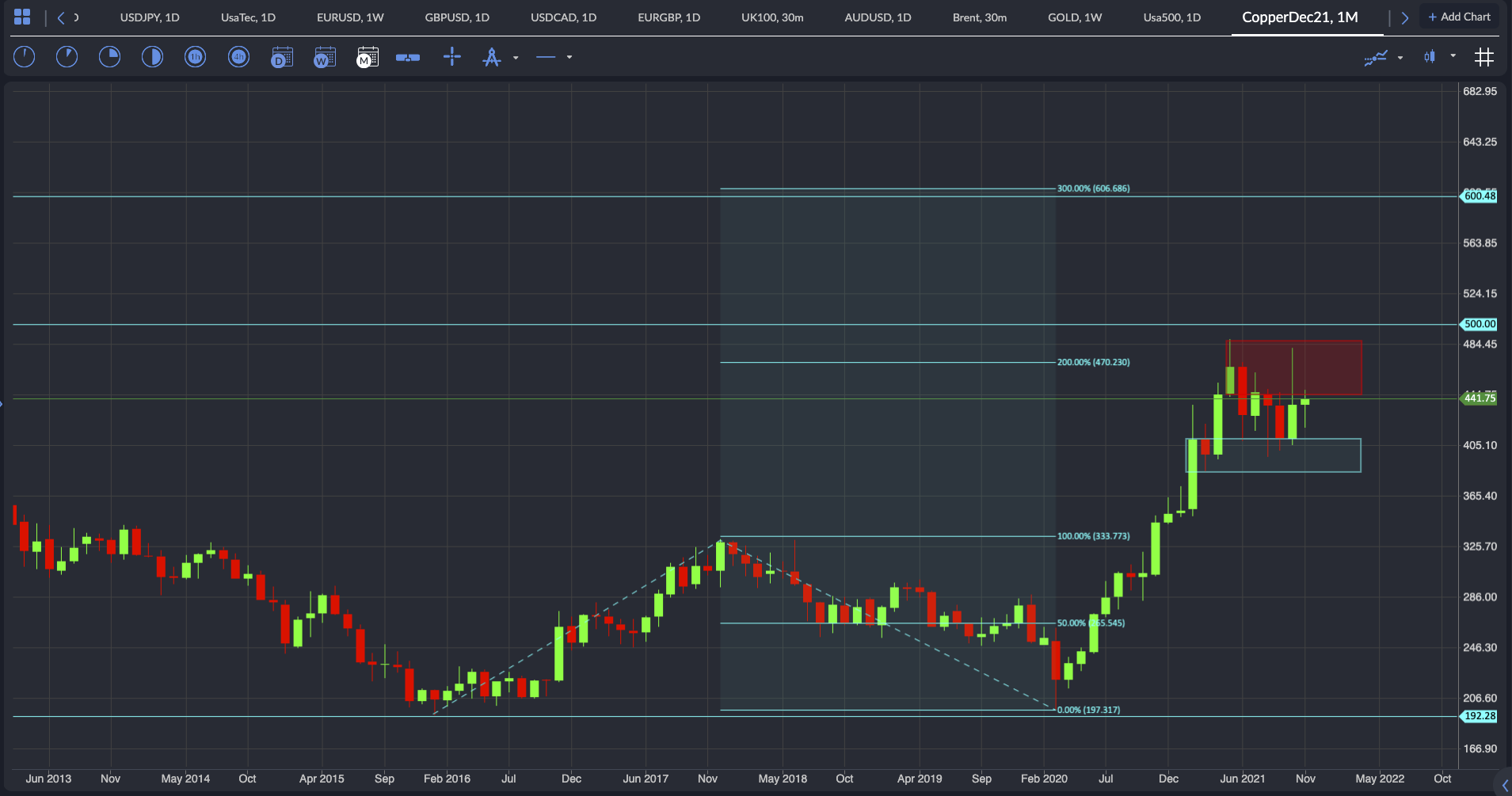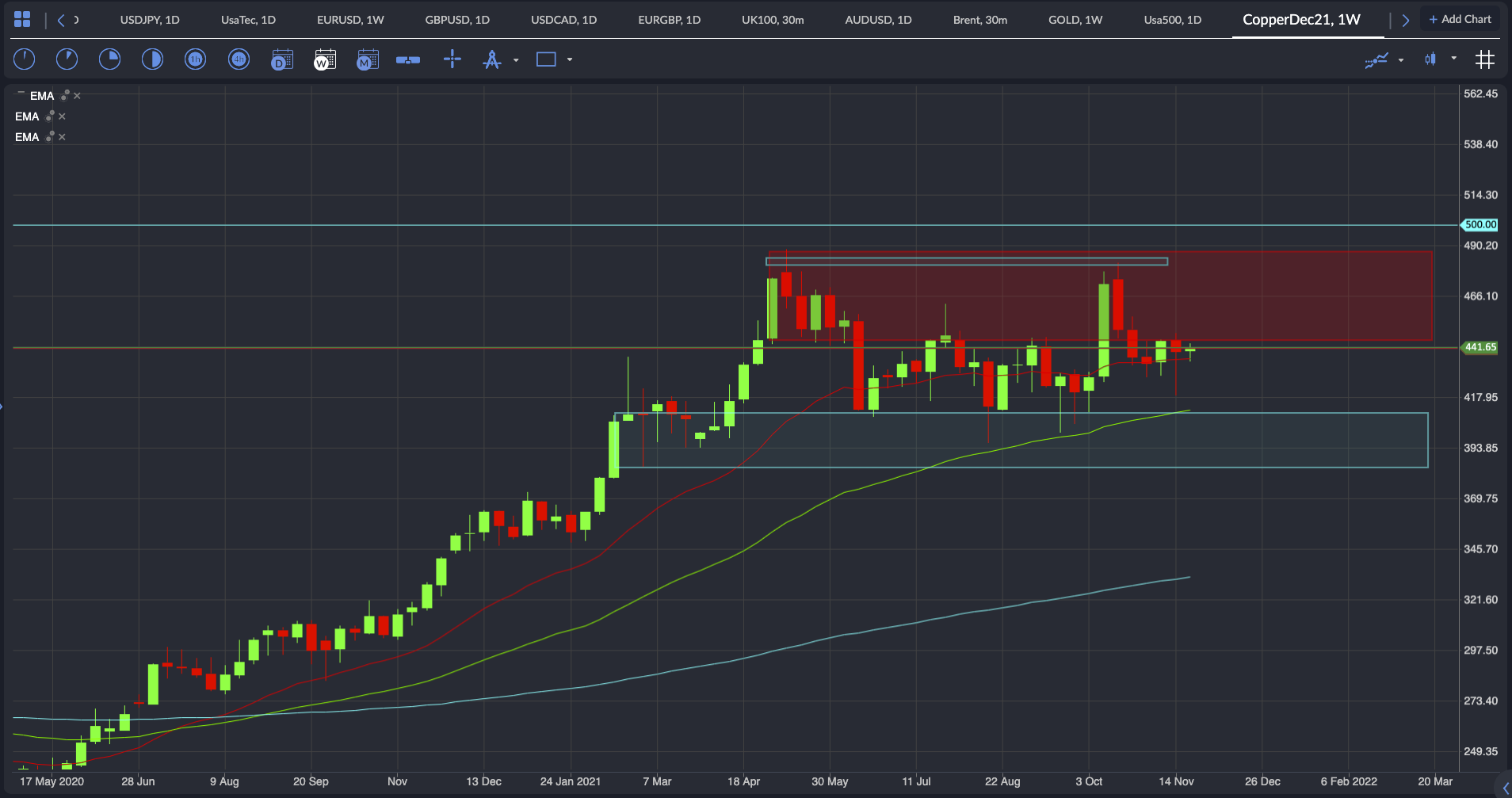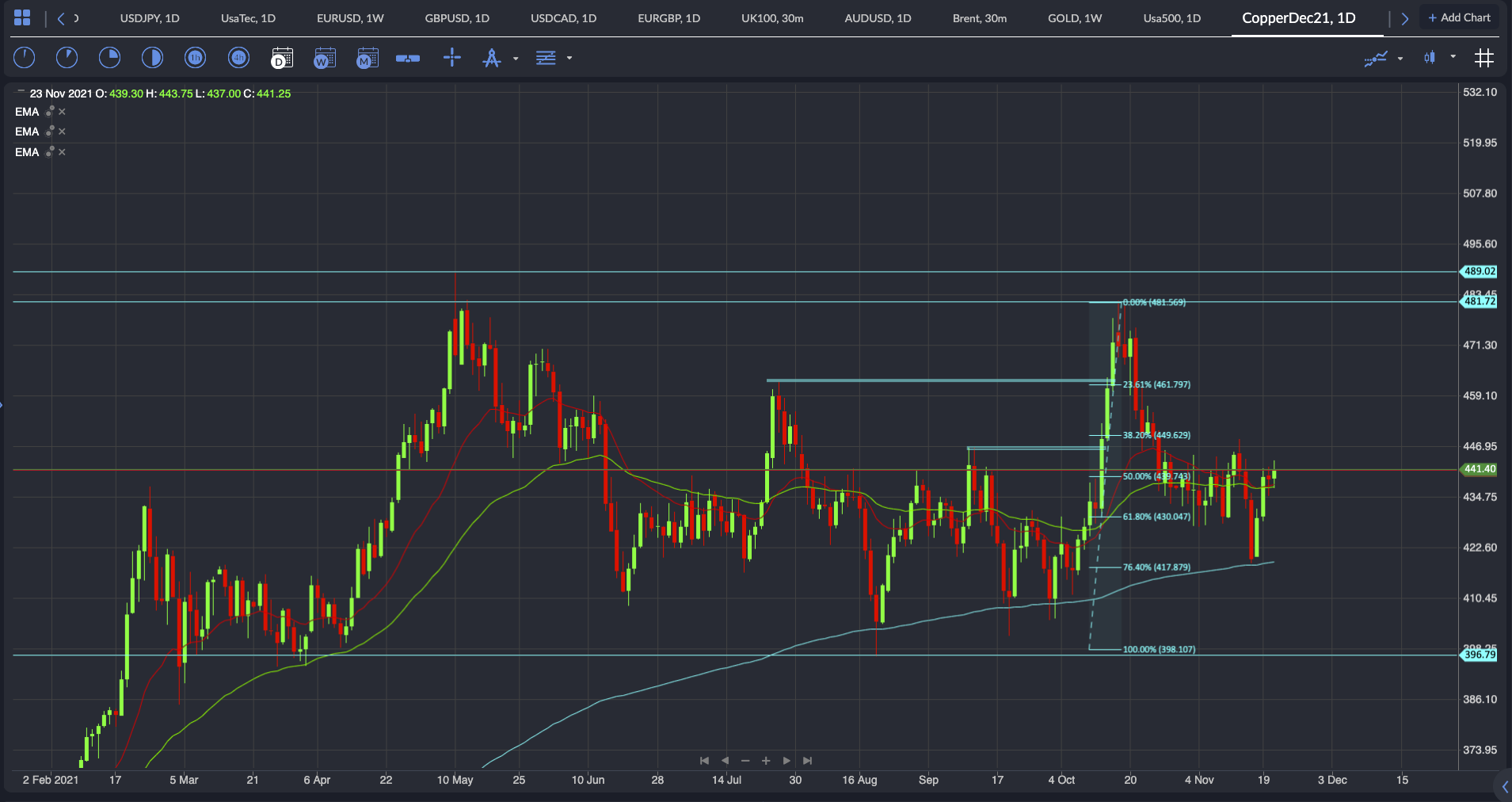Commodity Analysis – Copper
Copper has often been cited as the global barometer for economic health but gauging whether the demand or supply shocks are moving prices, currently is hard to work out.
Yesterday it was reported by the International Copper Study Group (ICSG), that the world refined copper deficit through August shrank to an estimated 107,000 mt from the 138,000 mt deficit calculated through July. “Although global demand started to recover in the second half of 2020, refined usage still remains below pre-pandemic levels in most countries,” ICSG said. A deficit is good for commodity prices, whereas a surplus is negative. A shrinking deficit is not quite an indicator of their being a surplus soon, but it is something to keep an eye on, especially if the deficit shrink were to accelerate.
See real-time quotes provided by our partner.
Copper prices have been range-bound in recent months due in part to concerns over China’s property market and global auto manufacturing. COVID-19 is still causing disruptions as we approach 2022, and China is still not bailing out their failing property developers, so there is a likelihood that demand is lower into the H1 of 2022. As global growth picks up and bottlenecks in the supply chain begin easing, copper prices are likely to remain supported by the small supply deficit. If there is a sudden boost to demand, we are likely to see a big move in the base metals as the supply is generally tight. A key concern is the level of inventories at the London Metal Exchange, especially for copper and zinc. As a result of production cuts post the Great Financial Crisis in 2007-2009, producers had reduced CAPEX, so any supply overhangs were generally limited, to begin with. With COVID-19 resulting in a mining disruption but also demand destruction, there had not been a major push to find new resources. This is changing as commodity prices stay relatively high and vaccinations ease the health pressures and disruptions.
As a result of COP26, developed nations are under pressure to decarbonise, and China will play a key role in reducing global carbon emissions. In preparation for the Winter Olympics, China has proven that it can achieve blue skies over Shanghai under international scrutiny. In addition, they will need to upgrade their electricity infrastructure and electrify more and although the Chinese authorities are likely to utilise their coal power stations, there is a relatively large adoption of Electric Vehicles.
The London Metal Exchange copper inventories remain low but by 2023, a possible surplus could emerge as rising mine supply picks up. The commercial reporters on the CTFC show that the producers are adding to their overall short positioning, which is a sign that they want to lock in these current prices. An oversupply would obviously result in lower prices and shorting the physical is a good hedge.
Copper prices also dropped last week as the dollar rally slammed the Chilean peso. On Sunday, Jose Antonio Kast garnered 27.9% of the vote, followed by left-wing candidate Gabriel Boric with 25.8%, and the election will now go to a runoff on December 19, 2021. Political unrest a couple of years ago has built up quite a lot of uncertainty and the hope is that come 2022, the new Chilean President will be able to restore some order.
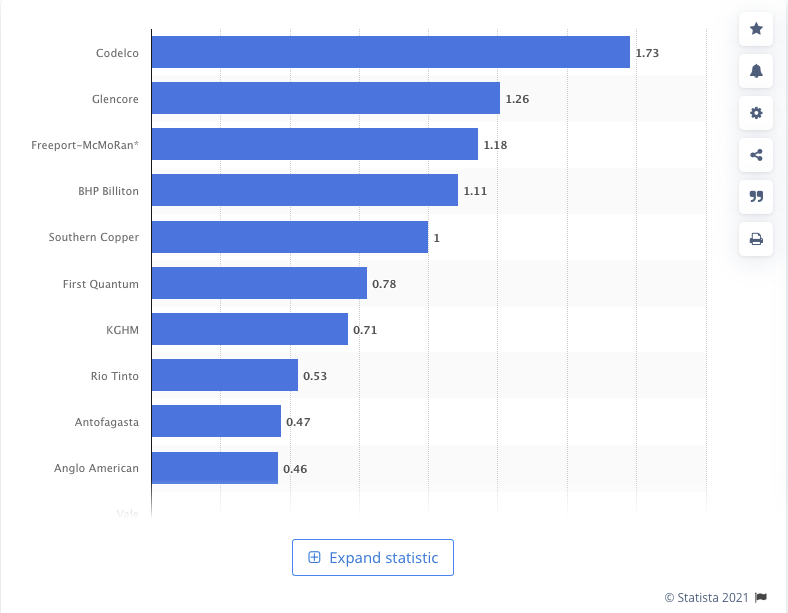

Global copper production estimates from Bank of America:
2020 – 23,332,000t
2021 – 24,808,000t
2022E – 25,509,000t
2023E – 27,075,000t
Cochilco, Chile’s state copper commission, reported earlier in November that Codelco’s output in September fell by 16% year over year to 133,800 tonnes. In the same month, production at BHP’s Escondida mine, the world’s largest copper mine, fell 12.2% year-over-year to 82,600 tonnes. By watching these two companies and their output, we can see whether the production estimates will be met, or whether the supply deficit will increase. Copper output in Peru, the world’s second-largest copper producing country, increased by 10% as production increased by 35% from March-May 2020, a period during which COVID-19-related country lockdown severely impacted the industry. Although production increased this year, it was still 8% lower than in the same period last year.
See real-time quotes provided by our partner.
The weekly chart shows the internal structure is starting to make higher highs and higher lows, whilst the dynamic support from the 3 moving averages is holding strong, especially when the price approaches the 50-period moving average. With the price currently trading above the 20-period moving average, I believe we can prepare for an acceleration higher to the year’s top print once we clear last week’s highs. The 30 thousand feet viewpoint looks like the consolidation period is carving out a bull-flag chart pattern, so there could be some considerable upside to be found. Momentum is to the upside and that is currently leading prices slightly higher too.
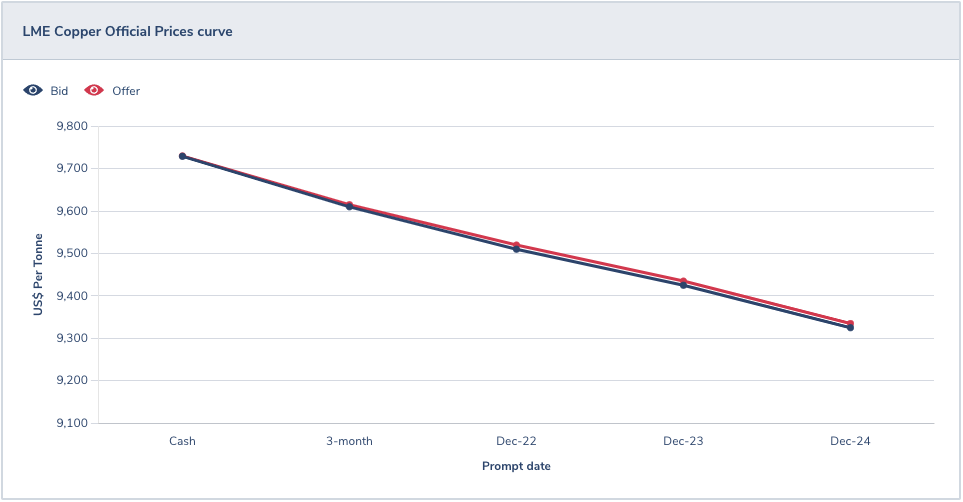

The TD Securities Commodity Trading Advisor (CTA) tracker shows that the nearest trigger price for these momentum traders is when copper reaches $9410 per tonne. The LME latest price for December 2023 futures is around that level but if December 2024 were to rise this could signal the next big push higher.
See real-time quotes provided by our partner.
On the ActivTrader platform, I am keeping an eye on the daily swing highs, as it looks like we broke the market structure that printed in July and September and has recently tested a deep retracement of the range. If we see copper rise above last week’s highs the run-up to 470 could be swift as there is little overhead supply or market structure to act as resistance. From then on it will be whether the demand/supply dynamic warrants higher prices.

